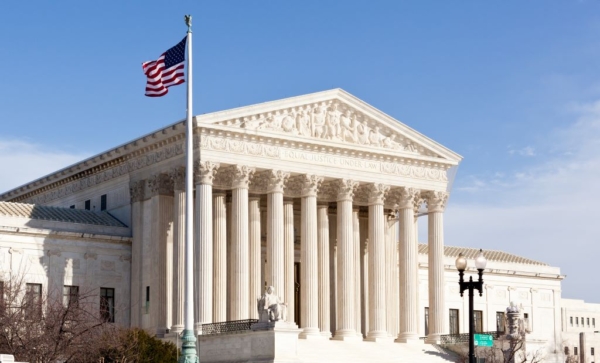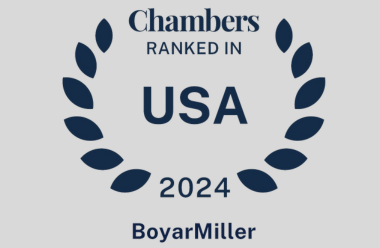With a deep understanding of your business alongside clear and honest communication, we help clients face challenges fearlessly.
Contact us today to learn more about our services and how we can help drive solutions.
Rules of Forgiveness: SBA Provides Further Guidance
May 26, 2020
Following the publication of the Paycheck Protection Program (“PPP”) Loan Forgiveness Application, the Department of Treasury, in conjunction with the Small Business Administration (the “SBA”) exercised its rulemaking authority to post a new Interim Final Rule (“IFR”) on loan forgiveness on May 22, 2020. In a question and answer format, here are what we believe are some of the major take-aways from the new IFR.
What is the process for loan forgiveness?
First, a borrower will complete Form 3508, which can be found HERE, and submit this form to its lender. The lender will then have 60 days to review the loan forgiveness application and determine if the borrower is entitled to forgiveness of some or all of the PPP loan proceeds. If the lender determines that the borrower is entitled to forgiveness of some or all of the amount applied for, then the lender will request payment from the SBA, and the SBA will have 90 days to review the loan or loan application and remit the appropriate forgiveness amount to the lender. There is no guidance on an appeal process; however, the SBA has indicated that it will issue a separate interim final rule addressing this issue.
A second Interim Final Rule on the SBA Loan Review Procedures and Related Borrower and Lender Responsibilities posted on May 22, 2020, indicates that the SBA can review any size PPP loan at any time. The SBA will review eligibility requirements, including the borrower’s certifications on the PPP loan application, amount of the PPP loan, use of the PPP loan proceeds, and loan forgiveness amounts. Frequently Asked Question No. 46 published on May 13, 2020, indicated that borrowers receiving loans of less than $2 million would be deemed to have made the certification regarding the PPP loan being necessary to support on-going obligations in good faith. Interestingly, this Interim Final Rule does not mention this $2 million threshold; once again creating some confusion surrounding which borrowers are likely to be investigated by the SBA.
If, during its review of the loan, the SBA determines that the borrower was ineligible for a PPP loan based on the law and guidance available at the time of borrower’s loan application or that borrower lacked an adequate basis for the certifications that it made in its loan application, no portion of the loan will be forgiven, and the borrower must repay the loan before the 2-year maturity date. If a borrower begins to make payments on the PPP loan, and the loan forgiveness amount paid to the lender by the SBA exceeds the remaining amount due under the PPP loan, the lender will remit the excess amount, including accrued interest, to the borrower.
What does “payroll costs paid or incurred” mean?
Since payroll practices vary widely depending on the borrower and type of business, there has been confusion surrounding what payroll costs will be eligible for forgiveness and what happens when the 8-week covered period does not align with the borrower’s payroll cycle. The IFR explains that borrowers may seek forgiveness for payroll costs paid and incurred during the 8 weeks beginning on either (i) the date of disbursement of PPP loan proceeds, or (ii) the first day of the first payroll cycle in the covered period, which is the start of the “alternative payroll covered period”. Only borrowers with biweekly or more frequent payroll cycles may elect to use the alternative payroll covered period.
The IFR also confirms the following:
- Payroll costs are “paid” on the day paychecks are distributed or the date of the origination of an ACH credit transaction.
- Payroll costs are incurred on the date an employee’s pay is earned (i.e., on the day the employee worked), except that for employees who are not working but are still being paid, payroll costs are incurred based on the schedule established by the borrower.
- Payroll costs that are incurred during the borrower’s last pay period of the 8-week covered period or the alternative payroll covered period are eligible for forgiveness if paid before the next regular payroll date following the conclusion of such an applicable 8-week period.
- Payroll costs that are both paid and incurred during the covered period (or alternative payroll covered period) may only be counted once.
Does “payroll costs” include wages to furloughed employees, bonuses, and/or hazard pay?
Yes. Payroll costs include salaries, wages or commissions paid to furloughed employees, subject to the $100,000 annual cap, as prorated for the covered period, and if an employee’s total compensation does not exceed $100,000 annually, then hazard pay and bonuses paid to that employee during the applicable covered period are eligible for loan forgiveness. Bonuses and hazard pay are considered to be supplements to salary or wages and therefore are a form of compensation.
When are “nonpayroll costs” incurred and/or paid?
Nonpayroll costs are eligible for forgiveness if paid during the 8-week covered period or incurred during the 8-week covered period and paid on or before the next regular billing date after the end of the 8-week covered period. This means that the 8-week covered period may be different for payroll and nonpayroll costs, and also means that borrowers may be able to use and have forgiven PPP loan proceeds for up 12 weeks of eligible nonpayroll costs. For example, if a borrower’s covered period begins on June 1 and ends on July 26, and the borrower pays its electricity bill for May and June during the covered period and pays its July electricity bill on the next regular billing date in August, the borrower may seek loan forgiveness for the May and June electricity bills paid during the covered period and for the portion of the July electricity bill incurred during the covered period. The amount of PPP loan proceeds that can be spent on nonpayroll costs is still limited to 25% of the total amount of the PPP loan.
Is there a cap on the amount of loan forgiveness for owner-employees and self-employed individuals’ payroll compensation?
Yes, the amount of loan forgiveness available for owner-employees and self-employed individuals can be no more than the lesser of (i) 8/52 of 2019 compensation or (ii) $15,385 per individual in total across all businesses. This is an important distinction in that owner-employees and self-employed individuals with multiple businesses must keep in mind aggregate compensation and be aware of the cap.
The IFR explains further that owner-employees are capped by the amount of their 2019 employee cash compensation and employer retirement and health care contributions made on their behalf, and Schedule C filers are capped by the amount of their owner compensation replacement, calculated based on 2019 net profit. For general partners, the amount of loan forgiveness is capped at the amount of 2019 net earnings from self-employment, reduced by claimed section 179 expense deductions (deductions on qualifying equipment and/or software), unreimbursed partnership expenses and depletion from oil and gas properties, multiplied by 0.9235. Further, no additional forgiveness is provided for retirement or health insurance contributions as such expenses are paid out of net self-employment income.
If a reduction in employee headcount is not the fault of the employer, can those employees be excluded from the loan forgiveness reduction penalty?
In certain circumstances, when calculating the loan forgiveness amount, a borrower may exclude any reduction in full-time equivalent (“FTE”) employee headcount that is attributable to an individual employee if:
- The borrower made a good faith, written offer to rehire the employee (or restore the reduced hours) during the 8-week covered period or alternative payroll covered period and the offer was rejected by the employee;
- The offer must have been for the same salary or wages and the same number of hours as earned by the employee in the last pay period prior to the separation or reduction in hours; and
- The borrower must have informed the applicable state unemployment insurance office of such an employee’s rejected offer of reemployment within 30 days of the employee’s rejection of the offer.
- An employee was fired for cause;
- An employee voluntarily resigned; or
- An employee voluntarily requested a schedule reduction during the 8-week covered period or alternative payroll covered period.
Borrowers should maintain records regarding these situations and be prepared to provide the same to the lender or SBA.
How does a borrower calculate its number of FTE employees?
A reduction in FTE employees during the 8-week covered period or the alternative payroll covered period reduces the loan forgiveness amount by the same percentage as the percentage reduction in the FTE employees. In order to calculate the reduction amount, a borrower needs to know how to calculate its average number of FTE employees. The IFR indicates that a full-time equivalent employee is one that works 40 hours or more, on average, each week, and the hours of employees who work less than 40 hours are calculated as proportions of a single full-time equivalent employee and aggregated. By way of example:
- An employee that works 40 hours or more on average during the 8-week covered period or alternative payroll covered period is an FTE employee of 1.0.
- For an employee that works less than 40 hours per week, a borrower has two options:
- Calculate the average number of hours of the employee per week during the 8-week covered period or alternatively covered payroll period (i.e. an employee that worked 30 hours on average would be an FTE employee of 0.75.), or
- Consider each employee working less than 40 hours an FTE employee of 0.5, regardless of the number of hours actually worked.
The borrower is free to choose the most beneficial method for calculating part-time employees’ equivalency; however, the method chosen must be consistent for all part-time employees.
Is there any effect on a reduction in employee salary or wages on the loan forgiveness amount?
Yes, for each new employee in 2020 and existing employee who was not paid more than $100,000 annually in any pay period in 2019, a borrower must reduce the total forgiveness amount by the total dollar amount of the salary or wage reduction in excess of 25% of the base salary or wages between January 1, 2020, and March 31, 2020. This is performed on a per-employee basis, not in the aggregate.
Could I be penalized twice with respect to an employee whose hours are reduced resulting in a compensation reduction?
The IFR clarifies that the formulas for the reduction of the loan forgiveness amount are set forth so as to not doubly penalize the borrower, in that, the salary/wage reduction penalty applies only to the portion of the decline in employee salary and wages that is not attributable to an FTE reduction. For example, if an hourly employee had been working 40 hours a week, but her hours were cut to 20 hours per week during the 8-week covered period, but there was no change to the employee’s hourly wage, the reduction in employee’s total wages is entirely attributable to the FTE employee reduction and the borrower is not required to conduct a salary/wage reduction calculation for that employee.
If you and your business need help to navigate through the IFR or the details of the PPP, please reach out for additional guidance from your BoyarMiller attorney.




